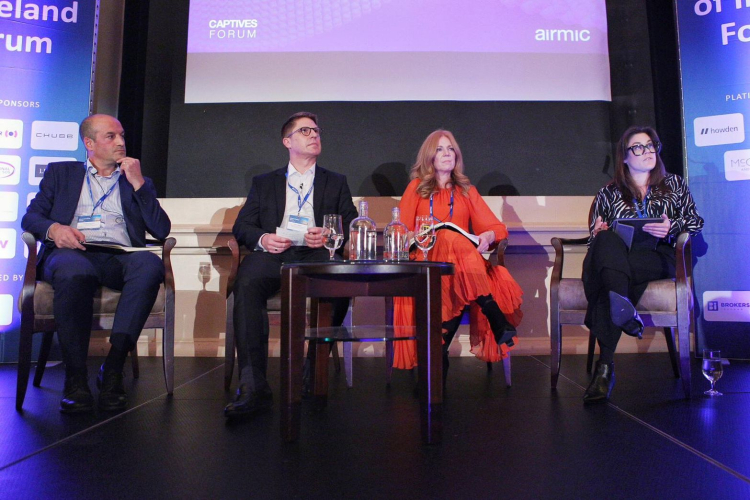Employee benefits, Solvency II reform and ESG top the captive agenda in Dublin

The topic of captive insurance played a major role at Airmic’s Island of Ireland Forum, in Dublin, on Tuesday 25 October.
Four captive workshops addressed the process of establishing a captive for employee benefits or P&C risks, the direction and possible impact of Solvency II reform, how captives can influence ESG group strategy, and the future of captive insurance.
In the opening workshop discussing new captive formations, Airmic member Patrick Loftus, captive and insurance manager at Sofinsod Insurance DAC, explained why Sodexo had chosen to establish a second captive in Dublin, while Mark Cook, director at Willis Towers Watson, outlined the recent Heineken formation of an employee benefits captive in the domicile.
“Twenty years ago, the driver for writing employee benefits through your captive was cost management,” Cook said. “Ten years ago, it became more about control of your benefits, and now companies want to use the captive to enhance their benefits offering to employees.
“In the case of Heineken, the size of the prize was big enough to establish a separate captive in Dublin for employee benefits rather than change the structure and model of its existing self-managed direct writing captive in the Netherlands.”
Solvency II reform and the potential for greater proportionality applied to captive insurers domiciled in the European Union is a hot topic for risk managers and captive managers.
A legislative proposal to reform parts of Solvency II, including specific recommendations for how captives are treated, is currently going through the EU process, but a final text is yet to be agreed upon.
Darren Maher, partner and head of the Financial Institutions Group at Dublin law firm Matheson, said that, realistically, any changes would be unlikely to come into effect until 2025.
“Some people seem to think the legislation is imminent. It is not,” he said. “It is now at the first reading in the European Parliament. You would hope to have the final legislation by the end of 2023 and then there is an 18-month transition period before it comes into law.”
The proposed reforms, if passed, should define the majority of captives under EU regulation as Low Risk Undertakings (LRUs) and could bring some regulatory relief, such as the submission of an ORSA (Own Risk Solvency Assessment) every two or three years, rather than annually.
“I don’t think the industry is going to get everything that it wants, but we are already starting to see some progress,” Maher added.
ESG and whether captives have a role to play in supporting their parent’s objectives was another topic addressed during the forum. The commercial market is setting its own targets to reduce underwriting of carbon-intensive industries or pulling out of certain markets altogether.
Commercial insurers are also incentivising better ESG-related performance by differentiating their insurance offerings, resulting in increased capacity, broader coverage, improved retentions and premium credits.
Lorraine Stack, managing director at Marsh Captive Solutions, said that as premium and assets under management in captives continue to increase, “it stands to reason our clients will use their captive more as capacity is reduced”.
She added that captives also have an opportunity to deploy their surplus to fund more risk management initiatives and support group objectives that could improve ESG performance.
Tom Laidler, global partner and distribution manager at Zurich Insurance Company, emphasised the increasing value and importance of enhanced employee benefits in contributing to the societal targets in ESG efforts. “Over the past 20 years, captives have been a key enabler of improved benefits offerings,” he added.
